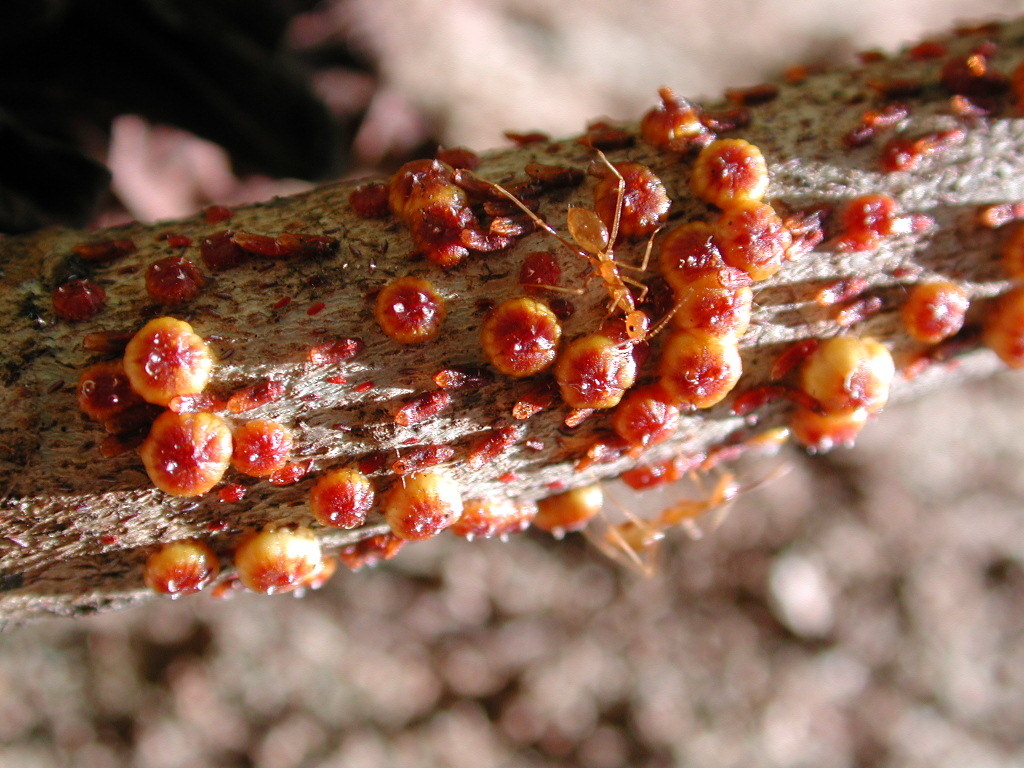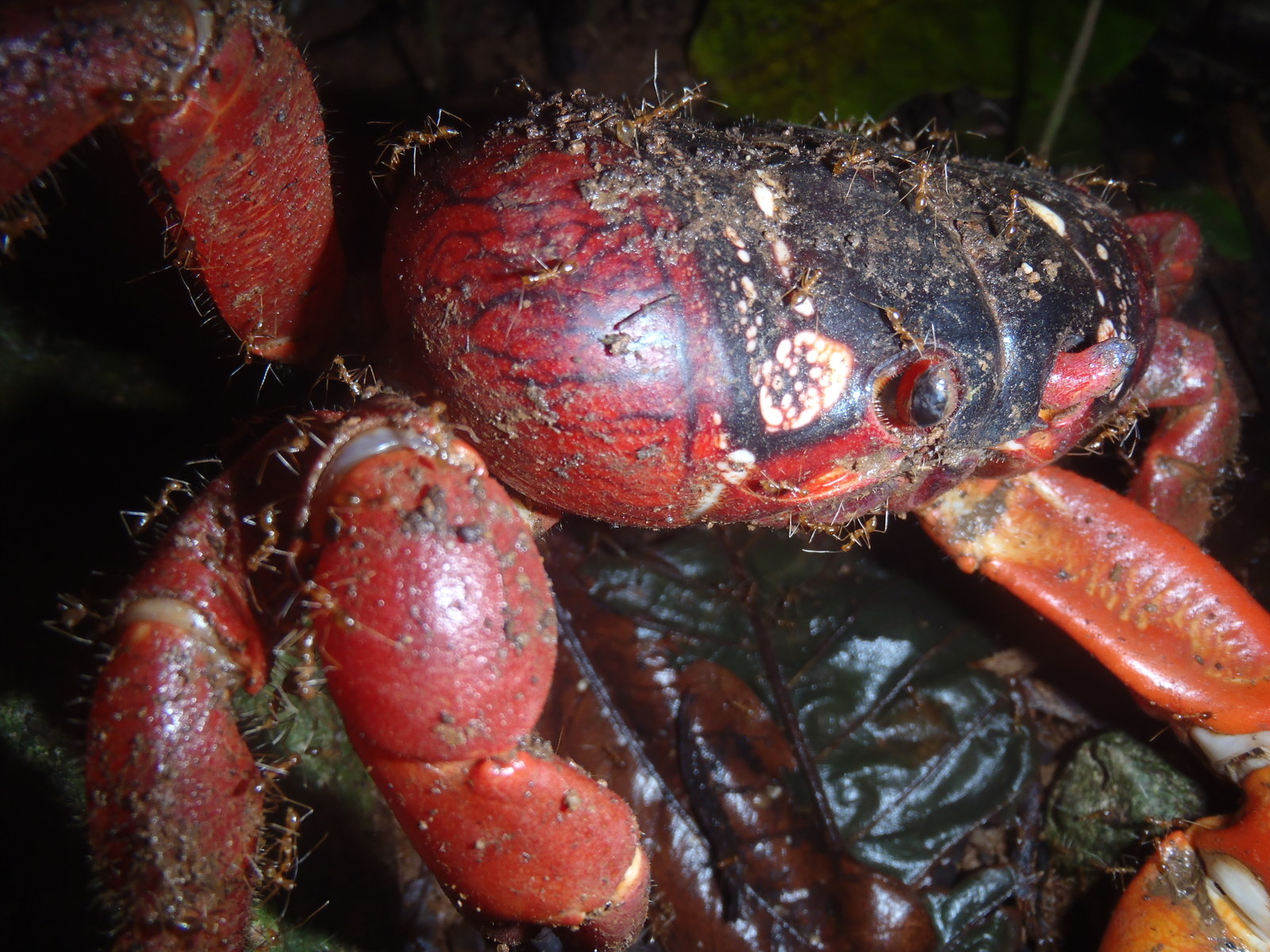The Christmas Island red crab population has been savaged by super colonies of yellow crazy ants, an aggressive invasive species that sprays a powerful acid as a defensive mechanism.
Now scientists have introduced parasitic wasps to deal with the problem and the project is showing early signs of success.
It is estimated that 40 to 50 million red crabs currently live on Christmas island, but in the past 15 years the population has been reduced by up to 40% by attacking yellow crazy ants.
The yellow crazy ant is listed as one of the top 100 worst invasive species by the International Union for Conservation of Nature (IUCN).
While their place of origin is not known, the species extends throughout Asia and the Pacific and a colony has recently been discovered in New South Wales.
Crazy ants were introduced to Christmas Island through shipping sometime in the early 20th century, but their population exploded in the early 1990s after lac scale insects invaded the Christmas Island ecology as well.

The lac scale insects live off sap and excrete a sugar-rich waste product known as honeydew that the ant colonies thrive on.
These super colonies have taken an immense toll on the crabs. Crazy ants spray formic acid when threatened, a corrosive liquid that can blind, incapacitate, and kill red crabs.
The super colonies of ants dominate over 2,500 hectares of Christmas Island's forest, with density in some regions reaching up to 1,000 ants per square metre.
Researchers from Melbourne's La Trobe University teamed up with Parks Australia in 2009 to address the ant infestation on the island and save the natural ecology.
The La Trobe team decided that baiting the ants with poison was not an effective option and instead began looking for the natural enemy of the ants' food source.

It found the answer in Malaysia in the form of a tiny parasitic wasp which kills the lac scale insect that produces the honeydew.
The wasp doesn't have a common name (it's known as Tachardiaephagus somervillei) and is only 2mm long. The wasp kills the lac scale insect by laying its eggs inside it.
The wasp's natural habitat stretches throughout South East Asia and across to India.

Before the wasp was introduced to Christmas Island in late 2016, extensive field studies were done to make sure that the wasp wouldn't have any unintended ecological effects.
Dr Pete Green, an ecologist on the La Trobe team, told BuzzFeed News that field research was done in the wasp's native range in Malaysia to look at how the wasps preyed on insects and "that gave great confidence that it was very, very host-specific just to our [lac] scale insect on the island."
The wasp has since established on the island, says Green, and has successfully spread between the super colonies of ants in some cases, multiplying up to a kilometre and a half from their original release zones.
"Which doesn't sound like much, but when you're dealing with a wasp that can neatly fit inside the zero on the '20' of a 20 cent piece...that's actually pretty impressive in the 18 months since it's been released," he said.

While the direct impact on the ant population has not been assessed, Green is confident that with a rising wasp population the crabs could reach their original numbers within the next two decades.
"Super colonies will be eliminated and that will clear the way for the crabs to re-inhabit those areas that they've been excluded from for so long," said Green.
